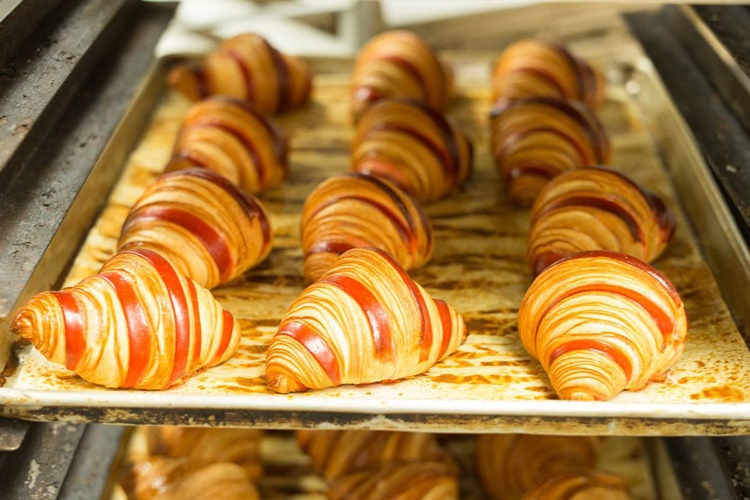CROISSANT – Here is the origin and the history of this mouthwatering pastry in a crescent shape that you probably didn’t know.
A croissant is a type of pastry made from a special dough that’s rolled and folded many times to create layers. This dough is made with flour, butter, sugar, salt, yeast, and sometimes milk. The key to its flaky texture lies in the butter, which creates steam as it bakes, causing the layers to puff up and separate.
Bakers carefully roll out the dough, layer it with butter, and then fold it over and over again. This process, called lamination gives the signature layers. After the dough has been folded several times, it’s shaped into crescents and left to rise before being baked to golden perfection.

While the classic croissant is simply buttery and delicious on its own, there are many variations to explore. Some croissants are filled with chocolate, almond paste, or savory ingredients like ham and cheese.
Each variation offers a unique flavor experience, but they all share the same flaky goodness that makes croissants so irresistible.
Croissants are best enjoyed fresh from the bakery, still warm and fragrant from the oven. They make the perfect breakfast or snack, paired with a hot cup of coffee or tea.
ORIGIN and HISTORY
The croissant as we know it today is thought to have evolved from a pastry known as the “kipferl,” which was popular in Austria during the 13th century.
When Austria was under siege by the Ottoman Empire in the late 17th century, bakers in Vienna, Austria, were credited with creating a pastry in the shape of a crescent moon to commemorate the victory over the Ottomans. It was called a “croissant,” which is French for “crescent.”
In the early 19th century, Marie Antoinette, the Austrian-born queen of France, is said to have introduced the croissant to France. Legend has it that she missed the taste of her homeland and requested that her bakers in France recreate the kipferl.
Over time, French bakers adapted the recipe and technique, incorporating more butter to create the flaky layers that are characteristic of the modern croissant.
The croissant gained popularity in France throughout the 19th and 20th centuries, becoming a staple of French bakeries and cafes. Currently, it becomes a beloved pastry worldwide.

